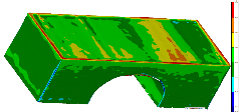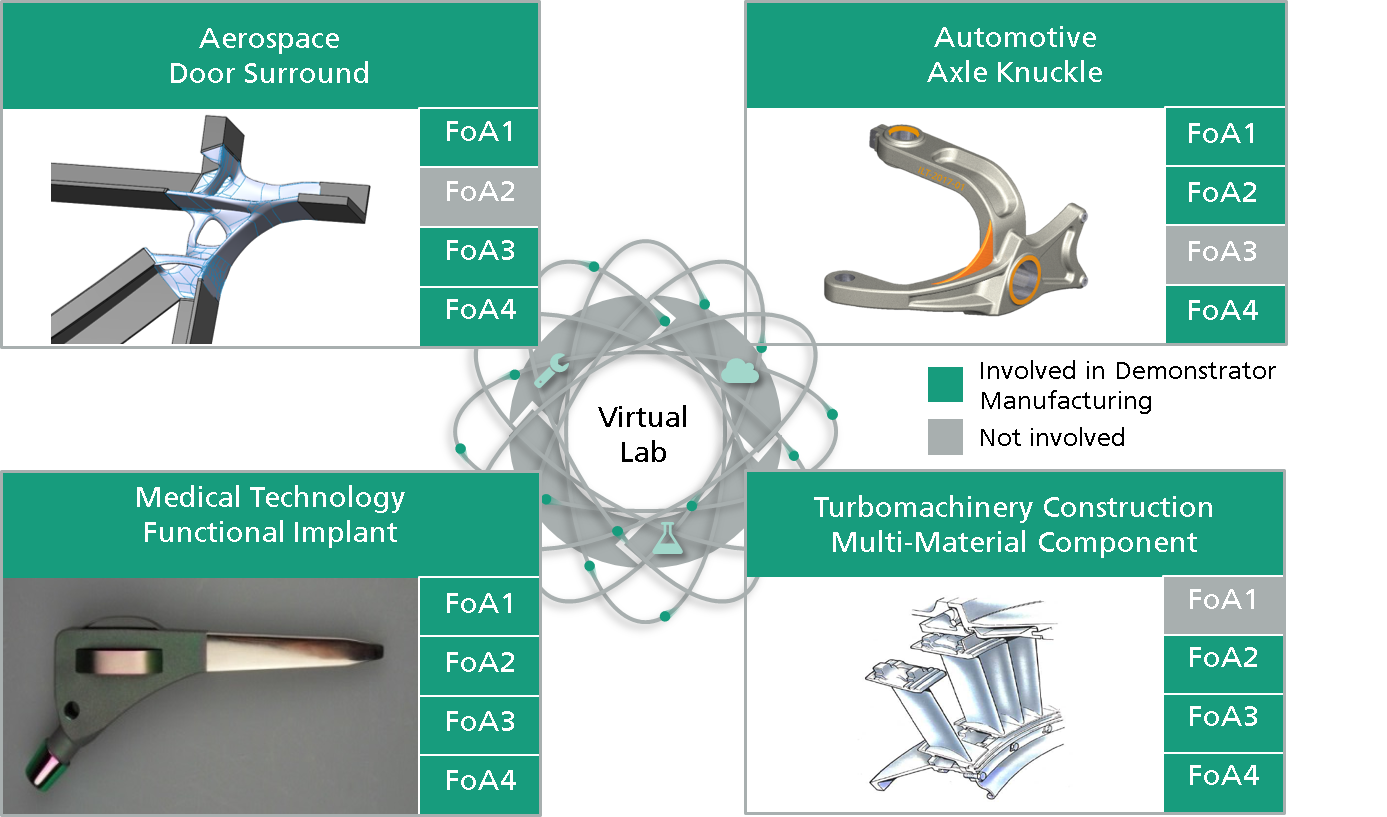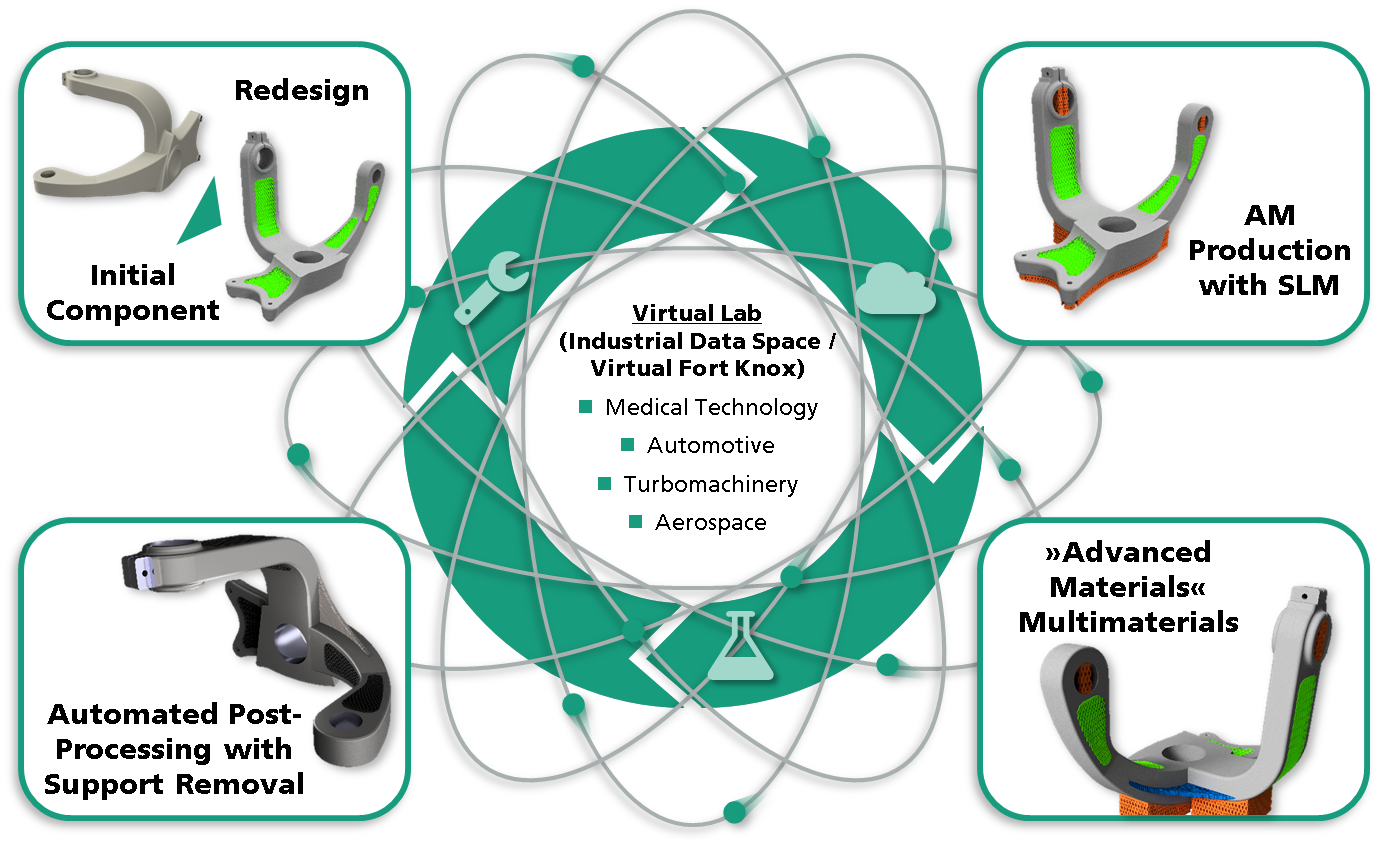In addition to the four fields of activity, which all institutions service with their own R&D capacities, a “Virtual Lab” is being set up. This lab aims to map the competences and equipment of the institutes involved in a closed and digital manner. Each entity – machine or product – is described and assigned a “digital twin”, which is the virtual part of a cyber-physical machine or a larger cyber-physical system. On the basis of these digital twins, real systems can be optimized by means of modeling and simulation. This will enhance, for example, error diagnosis, predictive analysis, product and process optimization or long-term quality assurance.
In the future, the system will also provide data for planning new products, which will drastically reduce qualification times. It will increasingly be able to assign products to machines, adapt relevant process parameters in the production process and take product targets, such as quality, and production goals, such as delivery times, into consideration, all autonomously. The role of humans will thus change – away from today's central planning to decision-making and monitoring. Autonomous systems within the virtual laboratory will support people on location with suitable evaluation and monitoring tools. The “Virtual Lab”, thus, provides complete digital transparency.
Demonstrators
In order to demonstrate the performance of the developed technologies in the four fields of activity, the futureAM lighthouse project develops demonstrator components and manufactures them across institutes and platforms. These are geared to the needs of individual industries relevant to AM.
 futureAM – Next Generation Additive Manufacturing
futureAM – Next Generation Additive Manufacturing

